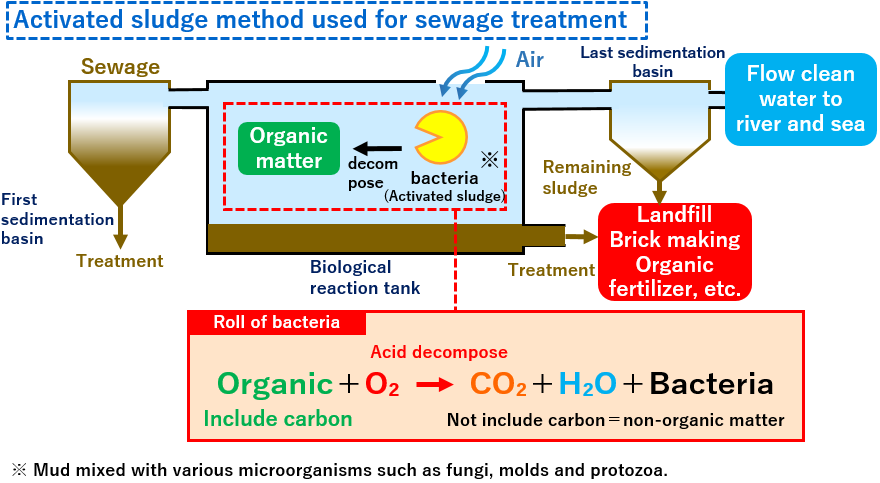Home>Fermentation that save the world>2.Fermentation which contribute to envrionment
Section2.Fermentation which contribute to envrionment
A variety of living things have been born since the birth of life on Earth four billion years ago. What would happen if there were no microorganisms?
Perhaps 4 billion years of dead or excrement of living organisms had covered the earth.
But that doesn't happen because the microorganisms "decompose" through fermentation.
Fermentation is indispensable for the earth to remain beautiful.
It can be said that the function of microorganisms is greatly involved in the formation of ecosystems.
Although fermentation has helped resolve environmental pollution, humans have learned only a fraction of the potential of microbes and have used very little.
There are many things that are not yet effective enough to be effective.
Currently, research and development are ongoing to solve global environmental problems (global warming, air pollution, water quality problems, marine plastic problems, organic waste treatment, etc.) It goes without saying that more and more attention is being paid to the easy technology field, and a new stage of biotechnology evolution is still required.
Air pollution
(ex1Clean the domestic wastewater by fermentation)
Fermentation is also very useful for environmental purification.
For example, in the treatment of wastewater using microorganisms, biological treatment is used to purify wastewater containing a large amount of organic matter using the power of bacteria, algae, and protozoa (paramecium, etc.).
Domestic wastewater from toilets, baths, and kitchens is collected at sewage treatment plants and processed by the activated sludge method.
Next, we will explain the mechanism of the activated sludge method.

① Settle and remove sand and debris in sewage.
② Add activated sludge to sewage.
③ Stir air into ② and ferment.
→ Microorganisms proliferate using the substances contained in sewage as nutrient sources and
break down into water and carbon dioxide.
④ Fine dirt attaches to the microorganisms and becomes a lump that easily sinks.
→ Because it forms a little less than 1㎜ lump, microorganisms and treated water can be
separated by gravity after the reaction.
At this time, it is possible to process continuously by recycling the sludge that has settled
at the bottom as activated sludge.
⑤ The supernatant water is chlorinated and discharged into rivers and the sea, and the
remaining sludge is used as a resource.
(ex2 Solve water pollution of river)
In the past, water pollution was a problem, such as dead fish floating in the Kanda and Tama rivers, Solved by fermentation technology.
How was the method like?
At first, bacteria were used for water treatment, but the bacteria were so small that sometimes they did not work well if the load weight was too large.
Therefore, the use of yeast of so-called big eaters (early eaters and eaters) has significantly improved purification accuracy.
By using fermentation technology to decompose the organic matter of dirty industrial wastewater with the help of microorganisms, it was possible to treat it into clean water.
At present, water can be purified to a level that is incomparably clean, and once purified water can be reused as industrial water.



